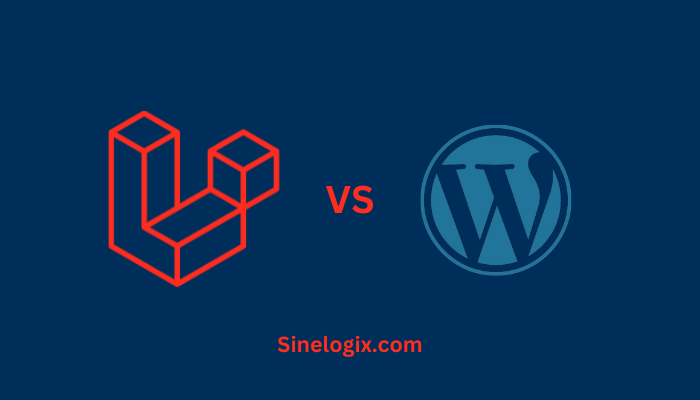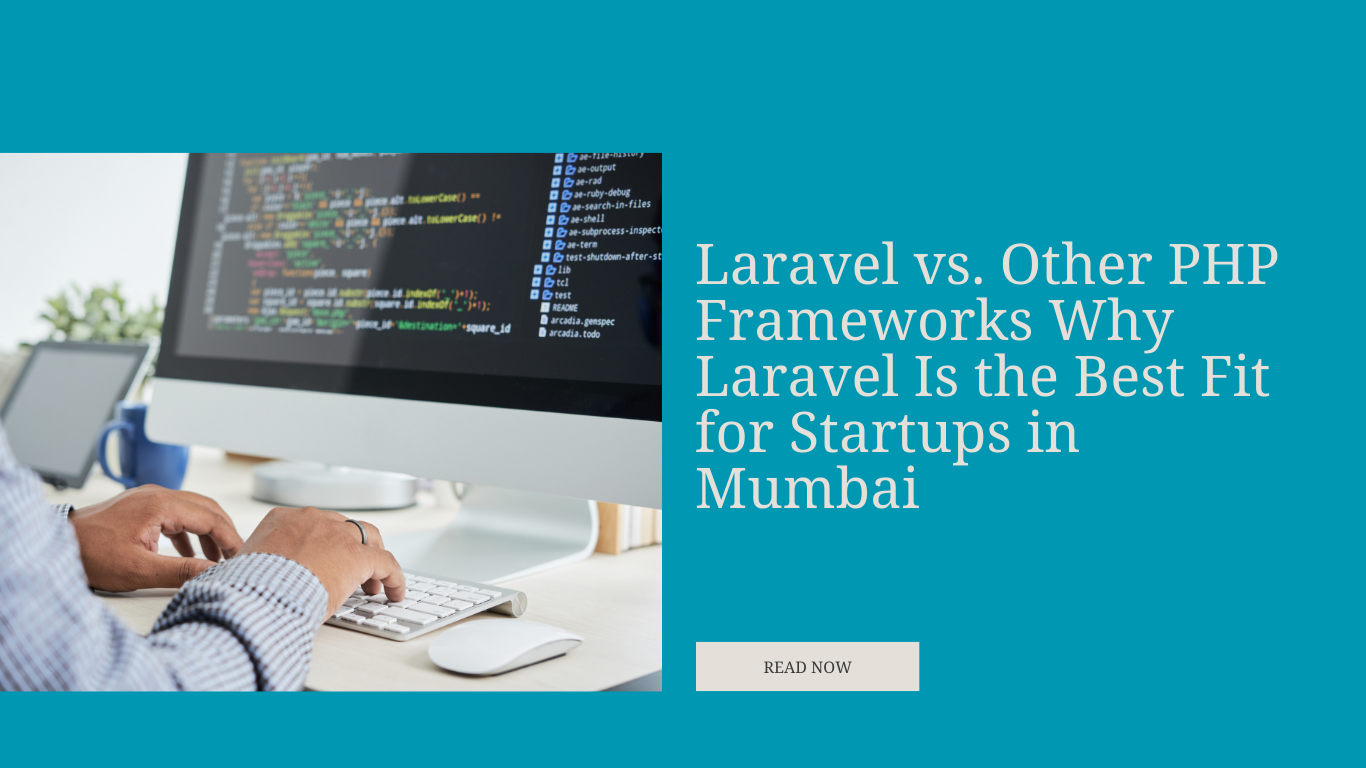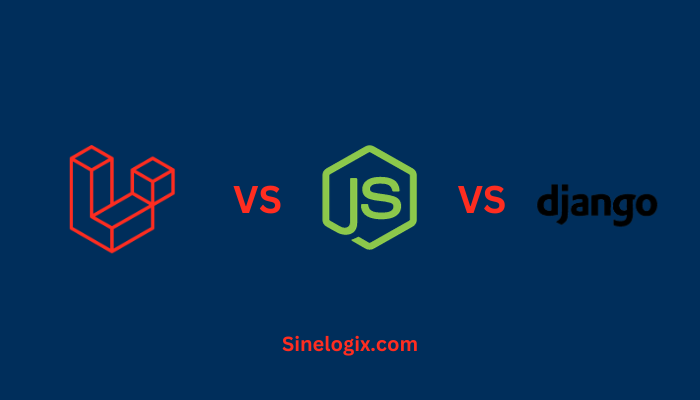In the vast landscape of web development, Laravel and WordPress stand as stalwarts, each representing distinct paradigms and catering to diverse needs.
Laravel, a PHP web application framework, excels in crafting custom applications with a focus on backend development. WordPress, a renowned content management system (CMS), empowers users to create and manage content-driven websites with a strong emphasis on simplicity.
In this comprehensive comparison, we explore the unique features, use cases, and considerations when choosing between Laravel and WordPress.
Overview of Laravel and WordPress
Laravel: Laravel is a PHP framework celebrated for its elegant syntax, modern features, and rapid development capabilities. Following the Model-View-Controller (MVC) architectural pattern, Laravel provides tools for routing, templating (Blade engine), and Object-Relational Mapping (ORM) through Eloquent. Laravel’s versatility makes it an ideal choice for building a wide range of web applications, from small projects to large-scale enterprises.
WordPress: WordPress, initially a blogging platform, has evolved into a robust content management system (CMS) that powers a significant portion of the web. Built on PHP and MySQL, WordPress is renowned for its user-friendly interface, extensive theme and plugin ecosystem, and the ability to create and manage various types of websites. WordPress is particularly well-suited for content-driven sites, blogs, and small to medium-sized business websites.
Use Cases and Target Audience
Laravel: Laravel is tailored for backend development, making it an excellent choice for developers building custom web applications. Its focus on clean code, the Model-View-Controller (MVC) architecture, and a robust ecosystem make it suitable for projects of varying complexity. Laravel caters to a broad audience, including individual developers, startups, and large development teams working on enterprise-level applications.
WordPress: WordPress is designed for users who prioritize simplicity and ease of use in managing website content. It is an ideal solution for bloggers, small business owners, and content creators who want to establish an online presence without delving into the complexities of custom development. WordPress’s vast library of themes and plugins caters to users with diverse needs, from basic blogs to feature-rich websites.
Integration and Collaboration
Laravel: Laravel and WordPress can coexist in a collaborative web development environment. Developers often integrate Laravel as the backend framework, handling custom application logic and database interactions, while using WordPress as the frontend CMS for managing content. Laravel can serve as an API endpoint, providing data to a WordPress frontend, creating a harmonious synergy between the two platforms.
WordPress: WordPress, being a full-fledged CMS, can integrate with Laravel by utilizing custom themes and plugins. Laravel can power specific functionalities, such as custom applications or complex backend logic, while WordPress manages the content presentation and user interface. This collaborative approach leverages the strengths of both platforms to create dynamic and content-rich websites.
Learning Curve and Development Experience
Laravel: Laravel’s learning curve is considered moderate, particularly for developers familiar with PHP and MVC frameworks. The framework provides comprehensive documentation, tutorials, and a supportive community. Laravel’s Artisan command-line tool streamlines common tasks, enhancing the development experience. Developers appreciate Laravel’s expressive syntax, contributing to writing clean and maintainable code.
WordPress: WordPress boasts a low entry barrier, making it accessible to users with varying levels of technical expertise. Its user-friendly dashboard and intuitive interface simplify content management and website administration. While developers may find it straightforward to work with themes and plugins, customizing complex functionalities may require a deeper understanding of WordPress’s architecture.
Community and Support
Laravel: Laravel’s vibrant community actively contributes to its growth and improvement. Forums, social media groups, and platforms like Laracasts provide avenues for developers to seek help, share knowledge, and stay updated on Laravel’s latest developments. Regular updates, security patches, and the ecosystem of third-party packages showcase the community’s commitment to Laravel’s ongoing success.
WordPress: WordPress boasts one of the largest and most active communities in the web development sphere. The WordPress community spans developers, designers, content creators, and business owners. Online forums, meetups, and WordCamps serve as valuable resources for support, learning, and collaboration. The vast repository of themes and plugins, contributed by the community, extends WordPress’s functionality.
Performance and Optimization
Laravel: Laravel’s performance is influenced by various factors, including server configuration, database optimization, and the efficiency of written code. The framework provides tools for caching, queuing, and optimizing database queries. Laravel Mix aids in asset compilation and minification, contributing to improved frontend performance. Laravel’s performance is generally suitable for a wide range of web applications.
WordPress: WordPress’s performance can be influenced by factors such as the choice of themes, plugins, and hosting infrastructure. While well-optimized themes and plugins contribute to a faster site, poorly coded or resource-intensive extensions can impact performance. Caching solutions and content delivery networks (CDNs) are commonly used to optimize WordPress sites for speed.
Customization and Theming
Laravel: Laravel provides a high level of customization through its Blade templating engine and the ability to create reusable components. Developers can design and implement custom layouts, views, and components to tailor the frontend presentation according to project requirements. Laravel Mix further facilitates customization by allowing developers to manage and compile frontend assets effortlessly.
WordPress: WordPress’s customization revolves around themes and plugins. Users can choose from a vast library of themes or create custom themes to define the site’s appearance. Plugins extend functionality, allowing users to add features without coding. While WordPress provides a flexible theming system, extensive customizations may require coding skills or the assistance of a developer.
Mobile Responsiveness
Laravel: Laravel itself is agnostic to frontend responsiveness, as it primarily focuses on backend development. However, when combined with a responsive frontend framework or libraries, such as Bootstrap or Vue.js, Laravel applications can easily achieve mobile responsiveness. Laravel’s API-centric approach facilitates the development of mobile applications that interact with the backend.
WordPress: WordPress themes are often designed to be responsive, ensuring that websites adapt seamlessly to different screen sizes and devices. Users can choose mobile-friendly themes or implement responsive design practices to optimize the user experience on smartphones and tablets. Additionally, mobile apps can be created using WordPress APIs for a dedicated mobile experience.
Security Considerations
Laravel: Laravel places a strong emphasis on security, offering features such as built-in protection against Cross-Site Scripting (XSS) and Cross-Site Request Forgery (CSRF) attacks. The framework encourages best practices in secure coding and provides tools like Laravel Sanctum and Laravel Passport for API authentication and token management. Laravel’s commitment to security makes it a reliable choice for building secure web applications.
WordPress: Security in WordPress is crucial due to its popularity. Regular updates, strong passwords, and the use of reputable themes and plugins contribute to a secure WordPress site. Security plugins, such as Wordfence or Sucuri, can add an extra layer of protection. Adhering to best practices, such as regular backups and monitoring, is essential to maintaining a secure WordPress installation.
SEO-Friendly Routing and URLs
Laravel: Laravel’s routing system allows developers to create clean, SEO-friendly URLs. The framework’s expressive routing syntax and the ability to define named routes contribute to building URLs that are both human-readable and optimized for search engines. Laravel’s approach to routing enhances the overall SEO performance of applications.
WordPress: WordPress is inherently SEO-friendly, with features such as customizable permalinks, categories, and tags. SEO plugins, such as Yoast SEO or All in One SEO Pack, enhance WordPress’s SEO capabilities by providing tools for meta tag optimization, XML sitemap generation, and content analysis. WordPress’s focus on content makes it conducive to search engine visibility.
Related Articles:
Conclusion
In conclusion, the choice between Laravel and WordPress depends on the specific goals, requirements, and nature of the project.
Laravel excels in crafting custom web applications with a focus on backend development. It is an excellent choice for developers and businesses seeking a robust and modern PHP framework that prioritizes code elegance and rapid development.
WordPress, on the other hand, caters to users who prioritize simplicity and ease of content management. It is an ideal solution for those looking to quickly establish an online presence, manage content effortlessly, and leverage a vast ecosystem of themes and plugins.




